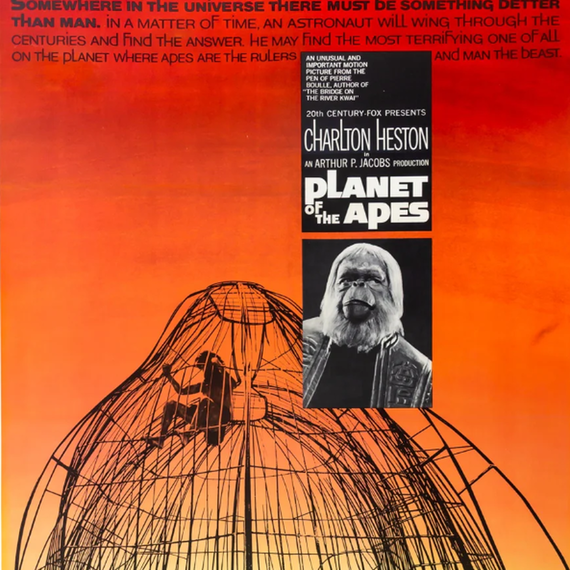Close Encounters of the Third Kind (1977)
director: Steven Spielberg
In this third collaboration between director Steven Spielberg and composer John Williams, music once again plays a crucial role. In Jaws (1975), two notes are enough to convince an entire cinema audience that a shark is lurking. Close Encounters (1977) on the other hand, is famed for its five-note sequence, a signal from the aliens landing on Earth. The score is dissonant and avant-garde, the structure is a creative musical journey from atonality to tonality: it starts with avant-garde tone clusters and moves into the expressionistic atonality of Schönberg. So without Schönberg, no communication with aliens in Close Encounters.
watch on Prime Video
watch on Google Play
watch on Apple TV
The Taking of Pelham One Two Three (1974)
director: Joseph Sargent
The film follows a group of criminals taking the passengers hostage inside a New York City Subway car for ransom. They demand a million dollars if their demands are not met within an hour. A thrilling story that requires thrilling music. Schönberg's twelve-tone or serial technique seeks to avoid any implication of tonality. It’s a trick often used by film composers to create a sense of tension. American David Shire also applies the twelve-tone system to his music for The Taking of Pelham One Two Three: "Pelham was one of the hardest pictures I ever had to crack. I wanted to get that dissonant-sounding jazz, but I didn't want it to sound arbitrary."
Planet of the Apes (1968)
director: Franklin J. Schaffner
Hollywood legend Jerry Goldsmith is also indebted to Schönberg's serial technique, which he applies in the sci-fi film Planet of the Apes. Astronaut Taylor and his crew land on an unknown planet where the roles of animals and humans are reversed. The planet is ruled by apes, while humans are treated as wild animals. “I haven’t done a totally serial procedure, but neither have the serial composers. But what difference does it make? No one can tell the difference.”
Regen (1929)
director: Joris Ivens
This short Dutch documentary may not have a specific plot, but it beautifully captures Amsterdam in the 1920s. Before, during, and after a downpour, from sunny streets to pouring rain on windows, umbrellas, and trams. In 1941, the film received a soundtrack written by German-Austrian composer Hanns Eisler. The piece is titled 14 Arten den Regen zu beschreiben, Op. 70, or: fourteen ways to describe the rain. Eisler's score is a study in twelve-tone music, an experiment for the Film Music Project of the Rockefeller Foundation in New York. The composer dedicates it to his old teacher Arnold Schönberg and premieres it in his home for his seventieth birthday.
My War Years - Arnold Schoenberg (1992)
director: Larry Weinstein
No composer other than Arnold Schönberg has been at once more despised, revered, controversial, and ultimately influential. Celebrated Canadian film director Larry Weinstein reflects on this in 1992, exploring the life of the Austrian-Hungarian-American composer, his extraordinary work, and his flight from Europe to the United States. But he also focuses on the years that shaped him. Against a backdrop of poverty and war, Schönberg struggled to proclaim his new vision of music to the world. Weinstein's documentary examines this period, with excerpts from live performances of works like Verklärte Nacht and Pierrot Lunaire.


